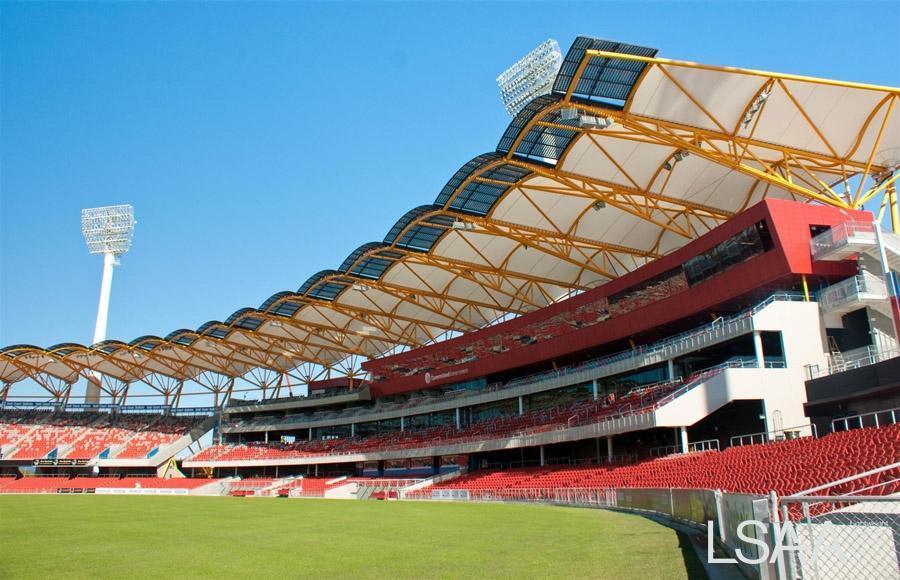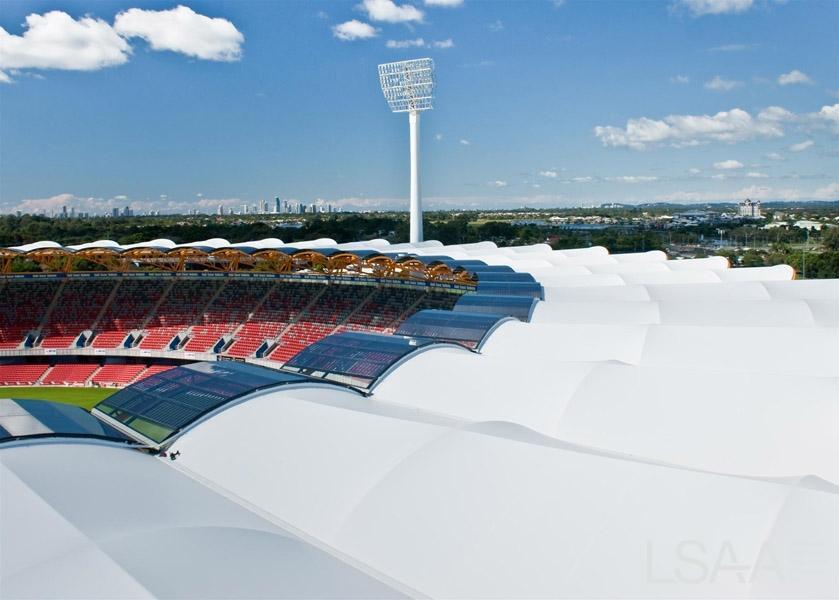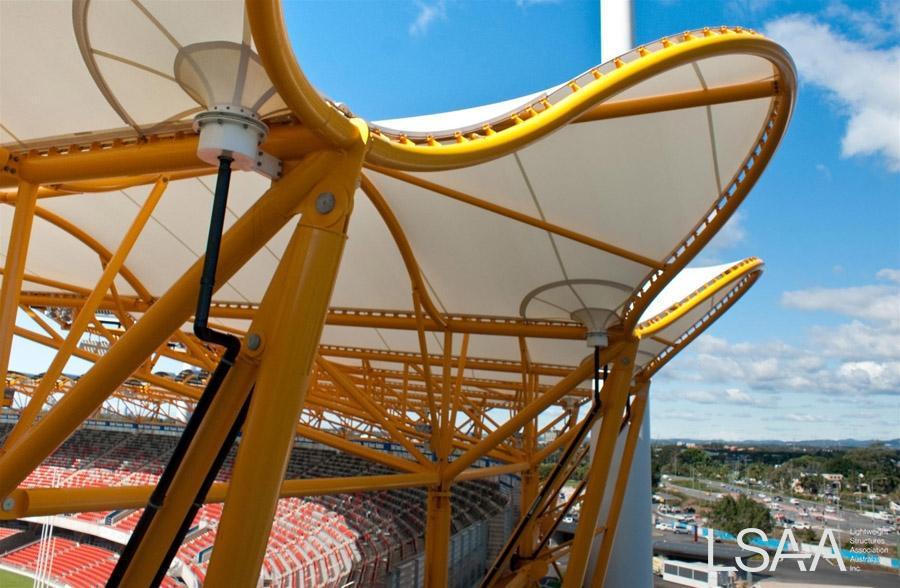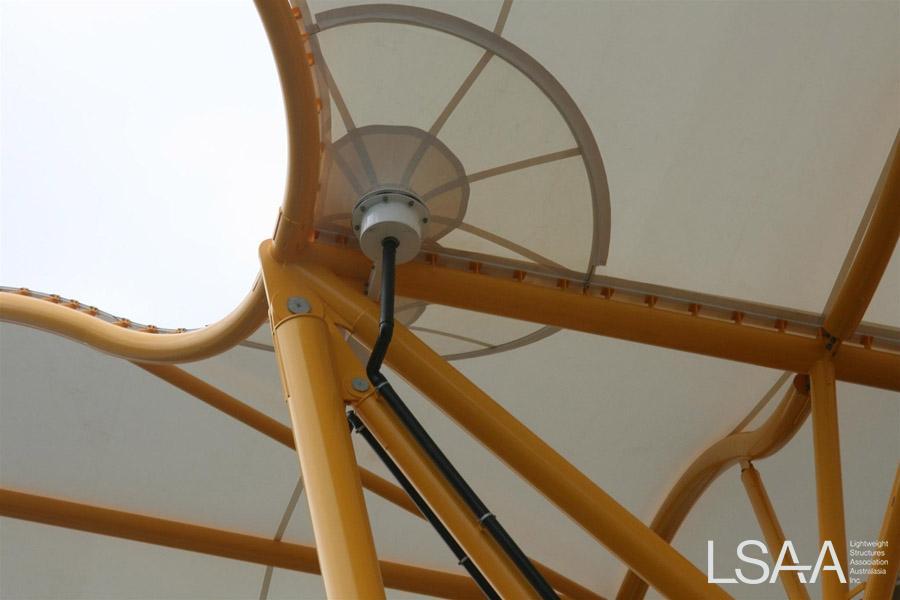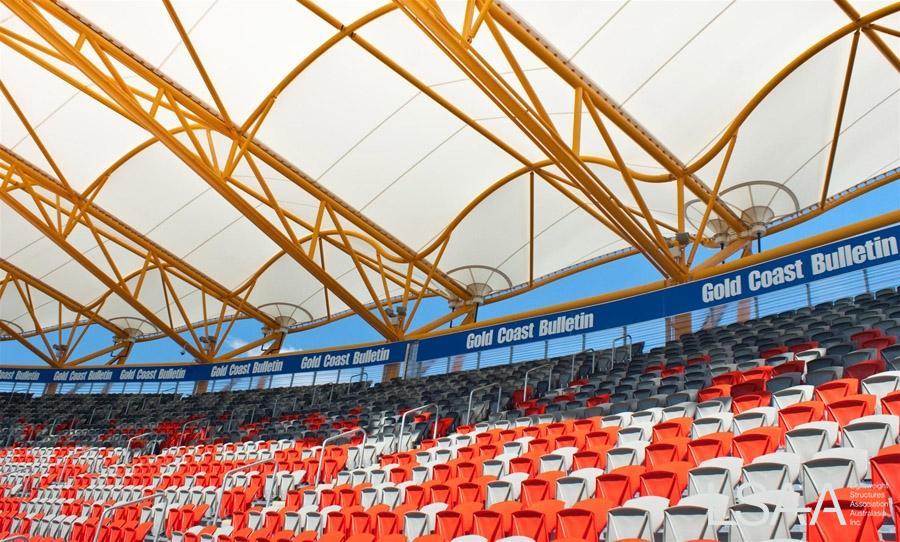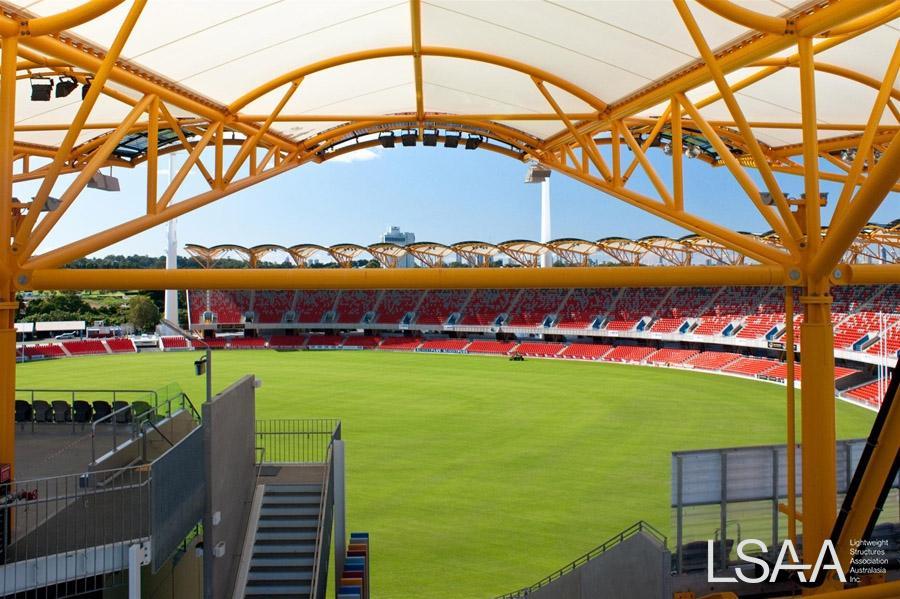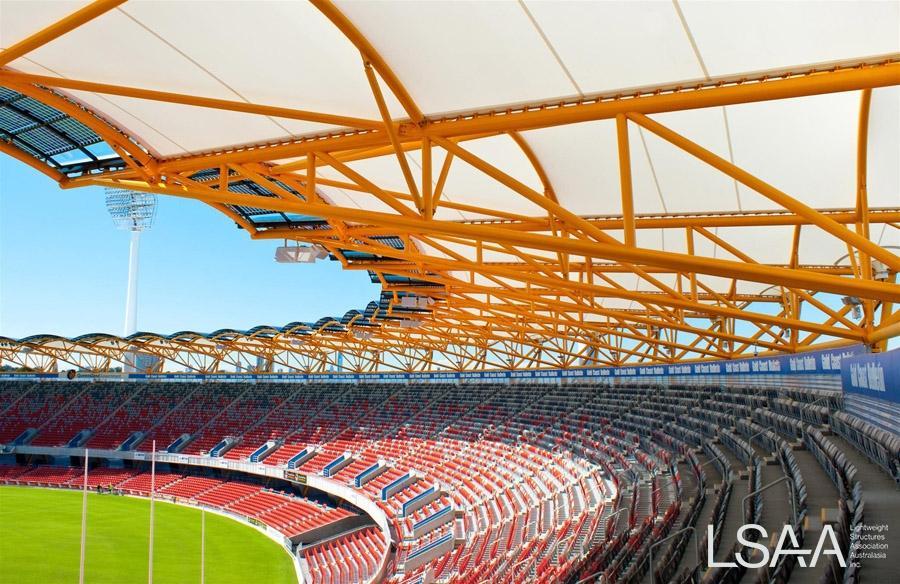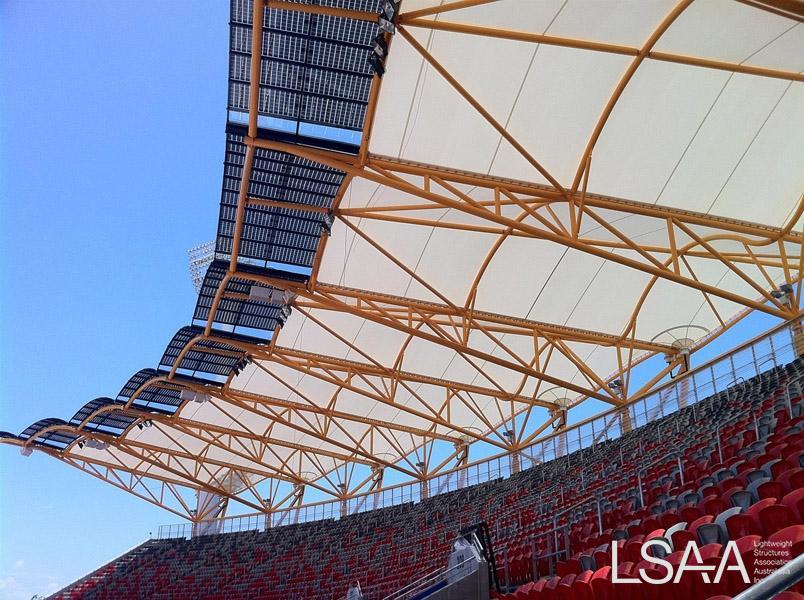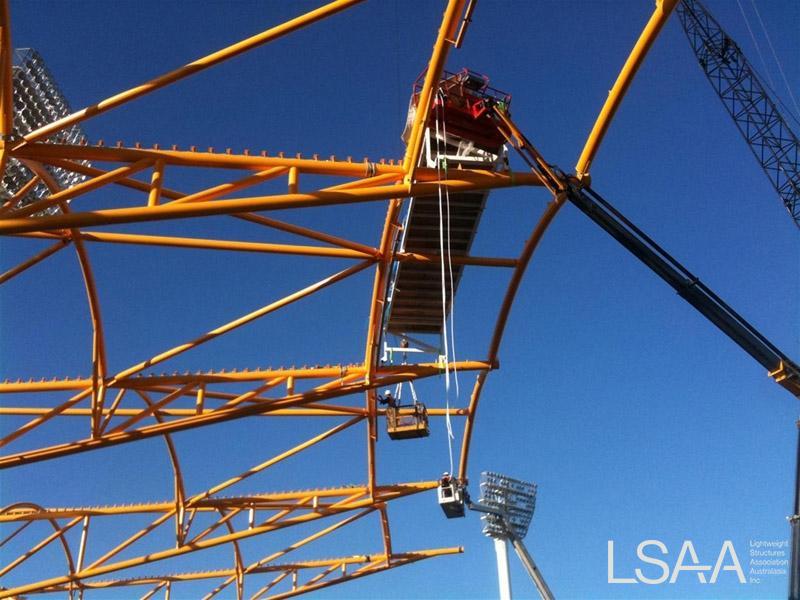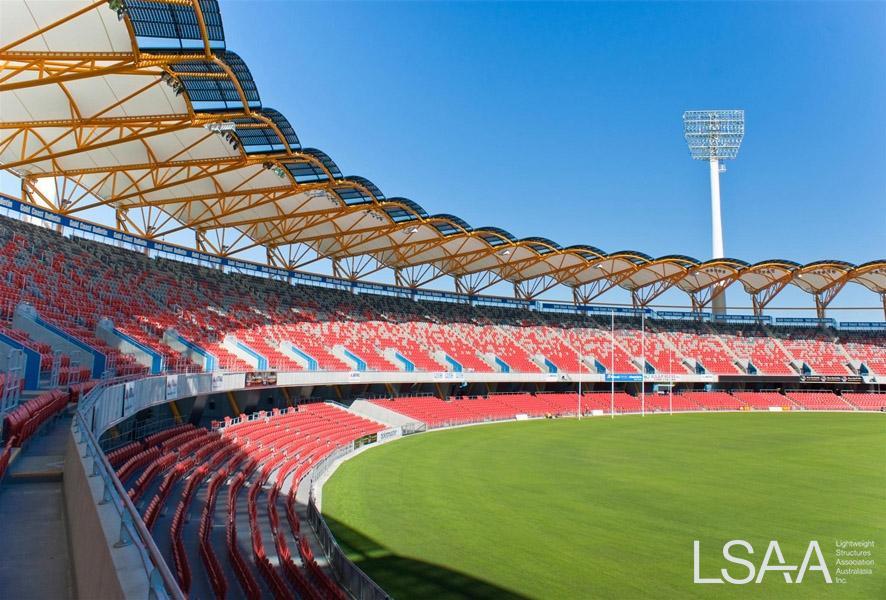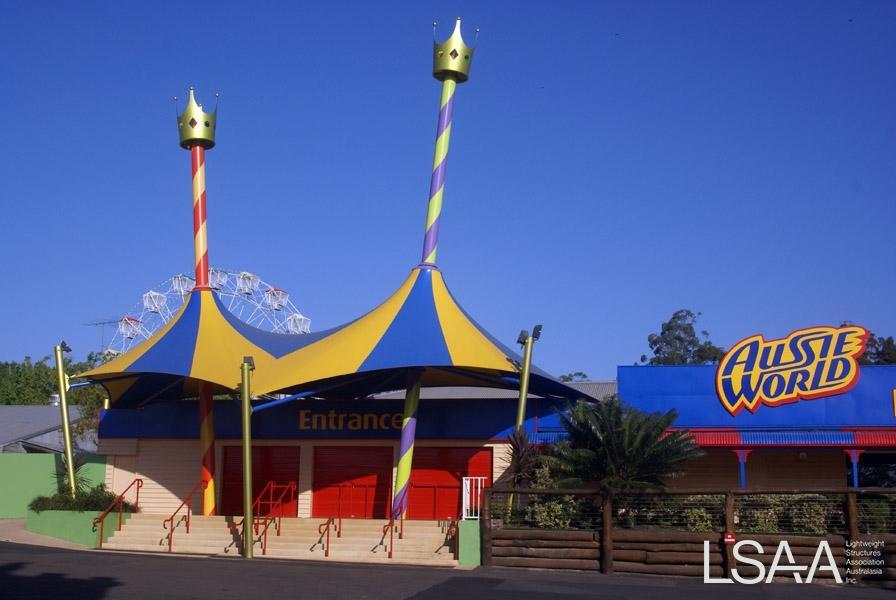This project was entered in the LSAA 2011 Design Awards (Cat 4, 4002)
PROJECT DESCRIPTION
The Carrara Stadium was originally built in the late 1980’s and played host to a number of events however the venue has traditionally been a football ground. The decision to redevelop the site came as a welcome change to many sporting fans. The redevelopment is also in line with the Queensland government’s bid for the 2014 Commonwealth Games.
The newly named and revamped Metricon Stadium is built to accommodate a Australian Rules football oval, world standard cricket oval, provision to allow future installation of an athletics field and international standard soccer field including all the associated corporate, media and player facilities. The Queensland Government funded project secures a future for sport of all kinds in the region, opens the possibility to world class soccer coming to the region as well as other major national and international sporting events.
As with any world class stadium the design incorporated a tensile membrane roof component. Covering 70% of the seating capacity at the venue this roof is a major part of the facilities function and aesthetics.
DESIGN / FABRICATION / INSTALLATION BRIEF
The tensile membrane roof at Metricon Stadium is borne out of a certain set of needs which all large scale developments experience. The need to provide long span, durable and light weight roofing to a steel frame is how many architects and designers come to the eventual conclusion that architectural fabrics serve all these purposes.
Designed by Populous Architects the undulating shape of the fabric panels is intended to mirror rolling sand dunes of the local Gold Coast beaches. The contrasting yellow coloured steel acts as a highlight against the crisp white PTFE fabric. These organic shapes and smooth forms are not easily achieved using an alternative building material. The highly flexible nature of tensile membrane means almost every whim of the designer and architect are met. Most importantly these design criteria are all achieved with minimal material use. MakMax engineers and drafters are aware of the goals to limit fabric waste at every stage of fabrication. All cutting panels are maximized to limit off cuts and waste.
One of the key design points MakMax contributed in was the provision of drainage from the 39 fabric panels. Using the most prevalent material available – PTFE fabric, MakMax engineers used the panel its self to house a syphonic drainage system. By patterning a steep inverted conic shape into the low point of each panel rain water is quickly and efficiently removed from the surface of the fabric. The syphonic action is created when 5mm or more rain falls on the surface, the momentum of the liquid creates force triggering a swirling, suction effect removing the liquid into drainage pipes.
Installation was included in the MakMax scope, with experience in delivering large scale fabric membrane roofing solutions this task was easily achieved, however, the site did put up some resistance. Because of the limited access points to the roof section, all lifting needed to be done from the interior of the stadium, the highest point of the structural steelwork. Another challenge was the limited types and sizes of cranes permitted inside the playing area. To combat these factors MakMax devised an installation sequence that used gantry platforms to lift each panel from the ground using pulleys. This platform then doubled as a safe work platform for installation crews. Development of this installation system meant MakMax was required to fulfill workplace health and safety criteria on the Queensland Government site, a rigorous procedure.
STRUCTURAL SYSTEMS
The scope of this project being just fabric meant that little supporting structural systems were developed. However, the implementation of the drainage sump created challenges for the membrane in terms of high stress concentrations. These could not be solved with fabric alone. The solutions to employ a short catenary cable to effectively provide two membranes – a large panel for the majority and a smaller panel for the sump – allowed for a clear fabric solution to resolve the drainage requirements.
MATERIALS
The fabric at Metricon Stadium was chosen by the client, Watpac after consultation with MakMax. Sheerfill II PTFE was chosen for its long life span, high tensile properties and durability. MakMax sourced the material from Saint Gobain via an internal purchasing department.
Due to the light weight nature of fabric the amount of structural steel required to support the roof is limited. Other environmental savings are also made in the cost to maintain the covered space, because Sheerfill II PTFE transmits approximately 16% of natural day light the interior space does not need to be artificially lit.
FABRICATION
Prior to patterning a biaxial stretch test was performed on the batch of fabric used on this project. By analyzing the data retrieved from the fabric’s reaction to tension along both the weft and warp of the weave MakMax engineers were able to design the shape of each panel ensuring optimal tension and strength within each panel. Without this process and the data it produced there is no guarantee that each panel is being accurately patterned to suit the fabrics tensile parameters. The process of testing tensile strength in fabric in house at MakMax is part of the ISO 14001 Quality certification.
Due to the tight time frame and large panel areas MakMax required a larger fabrication facility than was available at the Brisbane head office. For this reason MakMax called upon the Japanese arm of the global business, Taiyo Kogyo Corporation. All 39 panels were fabricated in Mizuho Japan and shipped to Queensland in batches for quick installation. At one point fabric was being deployed on site while other panels were still under manufacture in Japan.
COLLABORATION, CONSTRUCTION AND MAINTENANCE
MakMax was involved in collaboration between multiple disciplines during the design and construction stage of this project. At the earliest instance MakMax and Watpac discussed the possibilities of fabric types, installation methods and specifics of fabric manufacture and fabrication. Further into the construction process MakMax was involved in liaising with solar panel supplier regarding the connection details between glass panels and fabric terminations. Dealings with Hydraulic engineers regarding the syphonic drainage system and plumbing constrictors was conducted. Prior to practical completion of the main roof at Metricon Stadium, MakMax’s client, Watpac awarded tenders for two smaller fabric structures on site.
The maintenance schedule at Metricon Stadium consists of a 6 point inspection and cleaning plan to be carried out every two years. From 2020 the inspection period will extend to every 3 years. One inspection will encompass the following areas:
- Membrane tension
- Function and quality of the bracing cables
- Quality and condition of fabric edge clamps
- Damage by alien influence, vandalism, use foreign to function
- Seam bond stability
- Heavy build up on the surface (dead leaves, insects etc.)
Cleaning will then take place as per the requirements of the Sheerfill II PTFE membrane.
CREDITS
Title: Metricon Stadium, Carrara
Location: Nerang-Broadbeach Rd, Carrara, QLD 4211
Entrant: MakMax
Role: Designer, Installer
Client: Stadiums Queensland
Architect: Populous Architects
Structural Engineer: Arup and Tensys
Spec Consultant: Mike Lester, Engineer
Builder: Watpac
Fabricator: Taiyo Kogyo Corporation



